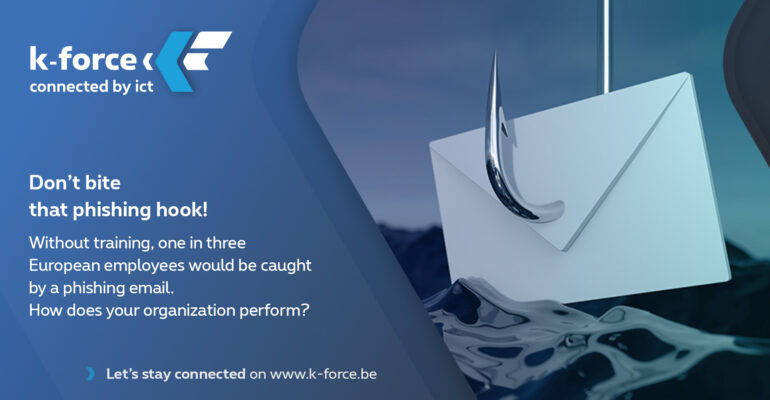Don’t bite that phishing hook!

Don’t bite that phishing hook!
Phishing, what is that again? Phishing is a form of online fraud in which cybercriminals try to get hold of the (bank) details, codes and credentials to their victims’ (bank) accounts. They do this using malicious e-mails, text messages, WhatsApp messages or social media messages containing a link to a fake website, a suspicious attachment or a request to download an app.
Research has shown that, without training, one in three European employees would be caught by a phishing email. After that first measurement, when employees had not yet received cybersecurity training, two more measurement moments followed. First an intermediate measurement, when employees had already been training for 90 days. At that point, the results were already much better, with an average falling from 29.9 percent (1 in 3) to 18.5 percent.
At the last measurement moment, training was attended at least on a monthly basis for one year. From that moment on, less than one in ten employees would fall for a phishing email (6.3 percent).
How does your organization perform?
Despite all (much-needed) IT security, it is often an employee who clicks on a wrong link, opens an unsafe attachment or worse, enters payment or login details on a rogue website. People therefore pose a major threat to the integrity of (company) data, not to mention the costs associated with data recovery.
With an initial audit and baseline measurement, we can analyze in detail how well your organization scores. With this information we can then define concrete action points or even roll out a training program for your employees.
Are you interested or do you want to know more about the possibilities? Let us know via the contact form below, or contact your account manager directly.
Source: ITdaily




